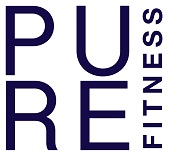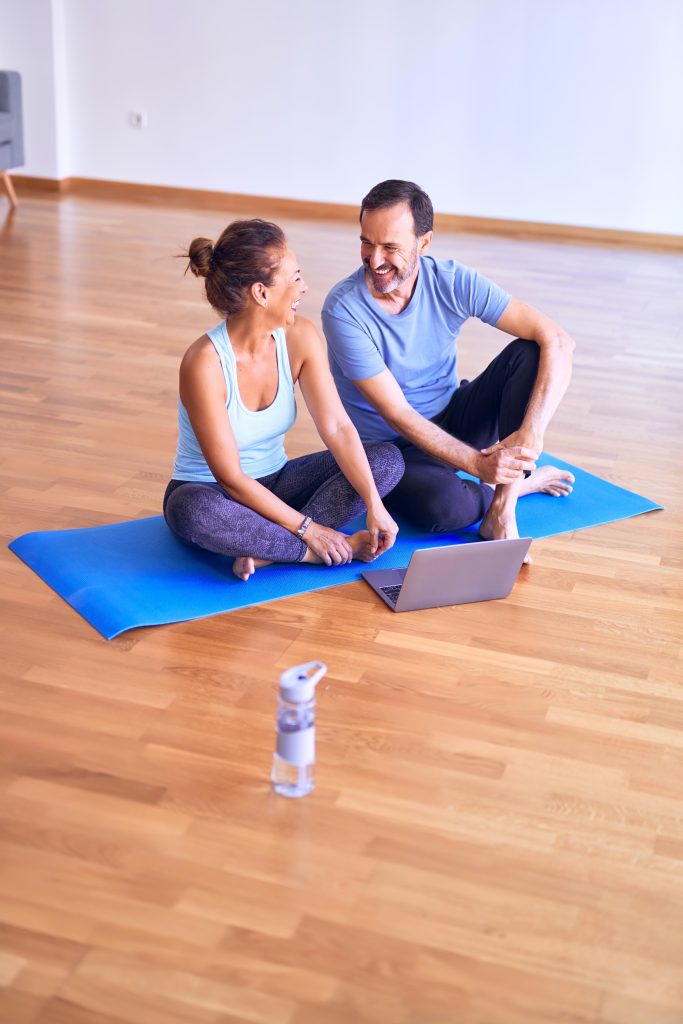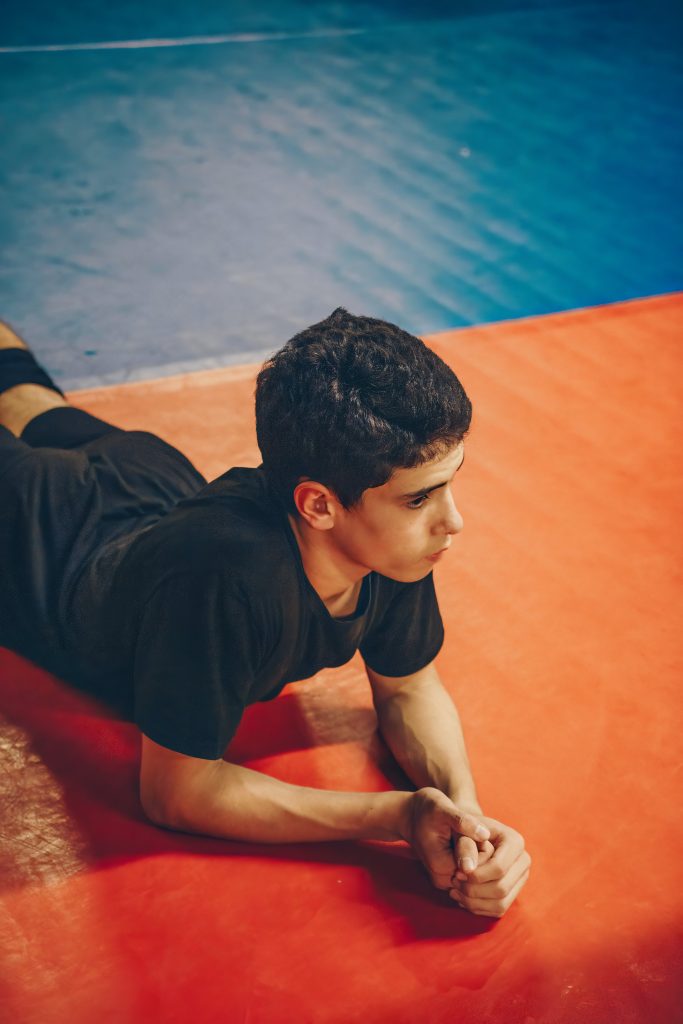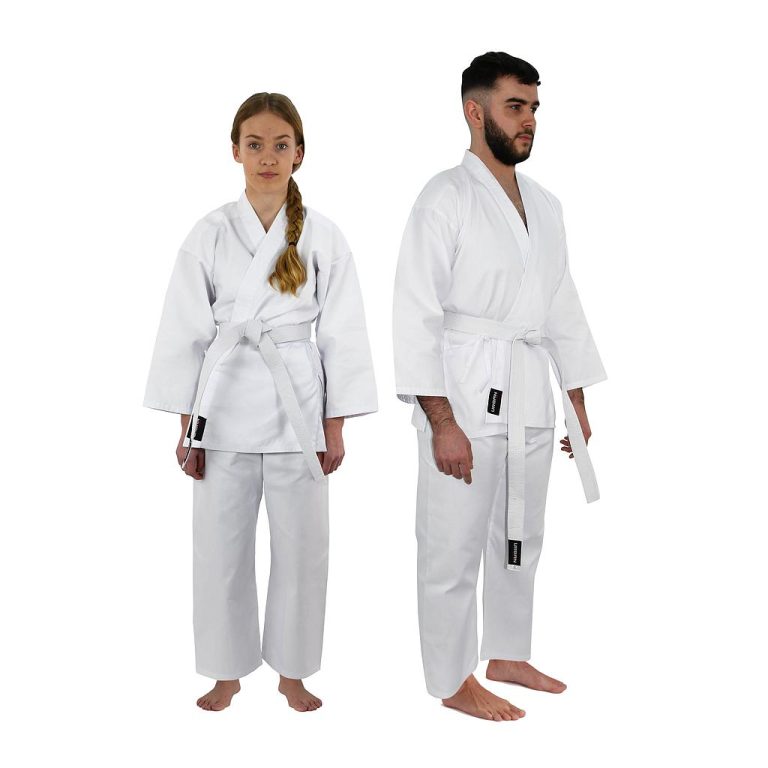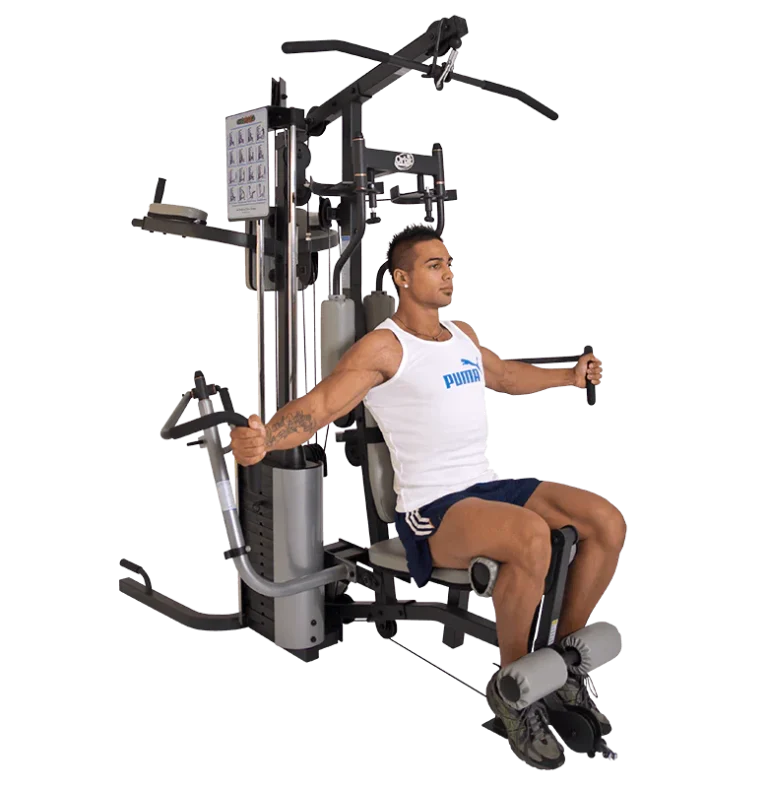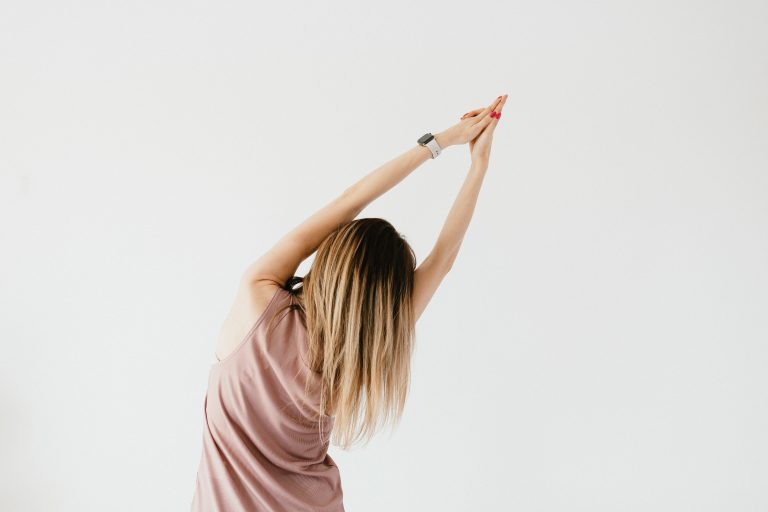Have you ever wondered if Pilates is suitable for both men and women? Well, the answer is a resounding yes! Pilates is a low-impact exercise method that focuses on strengthening the core, improving flexibility, and enhancing overall body strength. Regardless of gender, Pilates offers numerous benefits, such as improved posture, increased muscle tone, and enhanced body awareness. So whether you’re male or female, incorporating Pilates into your fitness routine can undoubtedly bring about positive changes in your physical and mental well-being.
Table of Contents
ToggleBenefits of Pilates for Men and Women
Pilates is a popular form of exercise that provides numerous benefits for both men and women. Whether you’re looking to improve your core strength, increase flexibility, enhance posture, or achieve muscle tone and definition, Pilates has something to offer for everyone. Additionally, Pilates can help improve balance, coordination, mental well-being, and even aid in weight management and athletic performance. It is a versatile exercise method that can be adapted to accommodate all fitness levels and provide a comprehensive workout experience.
Improved Core Strength
One of the key benefits of Pilates for both men and women is improved core strength. Pilates exercises focus on activating and strengthening the muscles in the abdomen, lower back, and hips, which make up the core muscles. With regular practice, Pilates can help you develop a strong and stable core, leading to better posture, spine alignment, and overall body strength.
Increased Flexibility
Another advantage of Pilates is increased flexibility. Through a combination of stretching and controlled movements, Pilates helps to lengthen and loosen tight muscles, improving your range of motion. This enhanced flexibility can be particularly beneficial for athletes, dancers, and individuals seeking to prevent or recover from injuries.
Enhanced Posture
Pilates is known for its ability to improve posture. By focusing on proper body alignment and engaging the core muscles, Pilates helps correct postural imbalances, such as rounded shoulders or excessive curves in the spine. Improved posture not only enhances your appearance but also reduces the risk of developing chronic pain and injuries.
Muscle Tone and Definition
Pilates can help both men and women achieve muscle tone and definition. The workouts involve dynamic, full-body movements that target multiple muscle groups simultaneously. By challenging your muscles through resistance and controlled movements, Pilates promotes lean muscle development, resulting in a toned and sculpted physique.
Improved Balance and Coordination
Pilates exercises require concentration and precision, which can enhance your balance and coordination. The emphasis on core stability and controlled movements helps you develop better body awareness, allowing you to move more gracefully and efficiently in everyday activities and sports.
Injury Prevention and Rehabilitation
Pilates is widely recognized as an effective tool for both injury prevention and rehabilitation. The gentle, low-impact nature of Pilates exercises makes it suitable for individuals recovering from injuries, as well as those looking to prevent future injuries. By strengthening weak muscles, improving flexibility, and addressing imbalances, Pilates can help you recover from injuries faster and reduce the risk of re-injury.
Boosted Mental Well-being
In addition to its physical benefits, Pilates also provides numerous mental health benefits. The mindful nature of Pilates, which focuses on breath control and concentration, can help reduce stress, clear the mind, and improve overall mental well-being. Regular Pilates practice has been shown to boost mood, increase energy levels, and promote a sense of calm and relaxation.
Effective Weight Management
Pilates can be an effective component of a weight management program. While Pilates alone may not result in significant weight loss, it can help you build lean muscle mass, which increases metabolism and calorie burning. Additionally, the mind-body connection cultivated in Pilates can help you make mindful eating choices and develop a positive relationship with your body.
Improved Athletic Performance
Pilates is not just for those looking to improve their overall fitness. It can also benefit athletes of all levels. The exercises in Pilates focus on improving core strength, flexibility, balance, coordination, and body awareness, which are all essential for athletic performance. Whether you’re a runner, cyclist, golfer, or any other athlete, Pilates can help you enhance your performance and reduce the risk of injuries.
Adaptable for All Fitness Levels
One of the greatest advantages of Pilates is its adaptability for all fitness levels. Whether you are a beginner or an advanced exerciser, Pilates can be adjusted to meet your individual needs. Pilates exercises can be modified to increase or decrease intensity, resistance, or range of motion, making it accessible to individuals of all ages, abilities, and fitness levels.
Specific Benefits for Men
While many of the benefits of Pilates apply to both men and women, there are some specific advantages that are particularly relevant to men. These include enhanced functional strength, improved sports performance, injury prevention and rehabilitation for active men, increased body awareness, improved spinal health, enhanced dynamic stability, improved mind-body connection, reduced risk of lower back pain, promotion of efficient movement patterns, and increased flexibility and range of motion.
Enhanced Functional Strength
Pilates focuses on improving functional strength, which is essential for everyday movements and activities. By targeting key muscle groups, such as the core, legs, and back, Pilates helps men build strength that translates into improved performance in daily tasks, such as lifting, carrying, and moving objects.
Improved Sports Performance
For men involved in sports and athletic pursuits, Pilates can be a game-changer. The core strength, flexibility, balance, coordination, and body awareness developed through Pilates can significantly enhance sports performance, whether it’s running, golfing, playing football, or any other sport. Pilates helps improve agility, power, and endurance, giving men a competitive edge.
Injury Prevention and Rehabilitation for Active Men
Active men, especially those participating in high-impact activities, are often prone to injuries. Pilates can play a crucial role in injury prevention and rehabilitation by addressing imbalances, strengthening weak muscles, and improving flexibility. Through targeted exercises, Pilates helps men recover from injuries and reduces the risk of re-injury.
Increased Body Awareness
Pilates promotes body awareness, a key aspect that can benefit men in various ways. By connecting the mind and body, Pilates helps men develop a better understanding of their body’s movement patterns, alignment, and muscle activation. This heightened body awareness enables men to move more efficiently, optimize performance, and prevent injuries caused by poor form or improper techniques.
Improved Spinal Health
Pilates exercises, with their emphasis on spinal alignment and core stability, can contribute to improved spinal health in men. Many men experience back pain and discomfort, often caused by a sedentary lifestyle, poor posture, or strenuous physical activities. Pilates can help reduce lower back pain, strengthen the supportive muscles around the spine, and promote a healthy spine alignment.
Enhanced Dynamic Stability
Dynamic stability, the ability to maintain control and stability while in motion, is crucial for men in various activities, including sports, work, and daily tasks. Pilates exercises challenge dynamic stability by incorporating movements that require coordinated muscle activation and control. By improving dynamic stability, men can move with greater confidence and reduce the risk of falls or injuries.
Improved Mind-Body Connection
Pilates places a significant emphasis on the mind-body connection, encouraging men to tune in and engage with their bodies during exercises. This heightened awareness helps men develop a deeper understanding of their physical abilities, proper alignment, and muscle activation. The mind-body connection cultivated in Pilates can have positive effects on body control, concentration, and overall movement quality.
Reduced Risk of Lower Back Pain
Lower back pain is a common complaint among men, often attributed to sedentary lifestyles, poor posture, and weak core muscles. Pilates can help alleviate and prevent lower back pain by strengthening the deep core muscles, improving spinal alignment, and promoting better posture. By addressing the root causes of back pain, Pilates offers long-term relief and reduces the risk of recurrent pain.
Promotes Efficient Movement Patterns
Efficient movement patterns are essential for men, as they can improve performance, prevent injuries, and enhance overall physical abilities. Pilates exercises promote correct movement patterns, teaching men how to engage the appropriate muscles for specific movements. By mastering efficient movement patterns, men can perform everyday activities with greater ease and optimize their performance in sports and fitness pursuits.
Increased Flexibility and Range of Motion
Improved flexibility and range of motion are crucial for men’s overall well-being and physical performance. Pilates exercises incorporate stretching and lengthening movements that target both large muscle groups and small muscle fibers, promoting increased flexibility throughout the body. With enhanced flexibility, men can move more freely, improve joint mobility, and reduce the risk of muscle strains or tears.
Specific Benefits for Women
Just as there are specific benefits for men, Pilates also offers unique advantages for women. These include enhanced postnatal recovery, improved pelvic floor health, increased core strength for pregnancy and labor, improved bone density and osteoporosis prevention, enhanced body awareness and acceptance, relief from menstrual discomfort, improved balance and coordination during menopause, enhanced pre and post-partum fitness, increased flexibility and joint mobility, and improved posture for breathing and circulation.
Enhanced Postnatal Recovery
Pilates can be highly beneficial for women during the postnatal period, helping them regain strength and muscle tone, improve posture, and alleviate postpartum discomfort. The exercises focus on rebuilding the core muscles, pelvic floor, and overall body strength safely and gradually. Pilates also aids in reducing stress and promoting relaxation during a period of significant physical and emotional changes.
Improved Pelvic Floor Health
The pelvic floor muscles play a crucial role in women’s health, especially during pregnancy, childbirth, and with age. Pilates exercises target the pelvic floor muscles, helping to strengthen and tone them. By promoting a strong and functional pelvic floor, Pilates can prevent or alleviate issues such as urinary incontinence, pelvic organ prolapse, and improve overall pelvic floor health.
Increased Core Strength for Pregnancy and Labor
During pregnancy, a strong core is essential for supporting the growing baby, maintaining good posture, and minimizing discomfort. Pilates offers specific exercises that are safe and effective for pregnant women, focusing on strengthening the deep core muscles without placing excessive strain on the abdomen. Enhanced core strength can also assist in the labor and delivery process.
Improved Bone Density and Osteoporosis Prevention
As women age, they become more susceptible to decreased bone density and osteoporosis. Pilates, with its emphasis on weight-bearing exercises and resistance training, can help improve bone mineral density and reduce the risk of osteoporosis. Regular Pilates practice can strengthen the bones, especially in areas prone to fractures, such as the spine, hips, and wrists.
Enhanced Body Awareness and Acceptance
Pilates encourages women to develop a positive body image by cultivating body awareness, acceptance, and appreciation. Through mindful movement and non-judgmental self-awareness, Pilates helps women embrace their bodies and recognize their strength and capabilities. This improved body image can contribute to overall mental well-being and self-confidence.
Relief from Menstrual Discomfort
Many women experience physical discomfort during menstrual periods, including cramps, bloating, and muscle tension. Pilates can help alleviate these symptoms by promoting circulation, reducing muscle tension, and improving overall body flexibility. Gentle Pilates exercises can provide relief from menstrual discomfort and enhance women’s overall well-being during this time.
Improved Balance and Coordination during Menopause
Menopause can bring about changes in balance, coordination, and overall physical function in women. Pilates can help counteract these changes through exercises that target balance, stability, and coordination. Regular Pilates practice during menopause can contribute to improved body control, reduced fall risks, and enhanced overall physical confidence.
Enhanced Pre and Post-Partum Fitness
Prenatal and postnatal fitness are essential for women’s health and well-being. Pilates offers safe and effective exercises specifically designed for each stage, supporting women in maintaining strength, flexibility, and overall fitness during pregnancy and recovery after childbirth. Pre and postpartum Pilates can aid in restoring core strength, promoting an efficient recovery, and providing a supportive exercise environment for women during this transformative time.
Increased Flexibility and Joint Mobility
Flexibility and joint mobility are vital for women throughout their lives, from young adulthood to older age. Pilates exercises focus on stretching and lengthening muscles and improving joint range of motion. Enhanced flexibility and joint mobility can help women move with ease, prevent injuries, and maintain an active lifestyle throughout their lives.
Improved Posture for Breathing and Circulation
Good posture is essential for optimal breathing and circulation. Pilates, with its emphasis on core strength, alignment, and postural control, can help women improve their posture. By addressing postural imbalances, Pilates allows women to breathe more deeply, optimize blood flow, and reduce tension in the neck, shoulders, and other areas prone to postural-related discomfort.
Differences in Pilates Practice for Men and Women
While Pilates is a versatile exercise method that can benefit both men and women, there are some differences in how the practice may be adjusted to suit individual needs and goals.
Equipment Usage
Pilates exercises can be performed on various equipment, such as the Reformer, Cadillac, or Chair, or using just a mat. While both men and women can benefit from equipment-based or mat-based workouts, the choice of equipment may vary based on personal preferences, accessibility, and the instructor’s expertise.
Emphasis on Muscle Groups
In Pilates, the emphasis on muscle groups may vary between men and women based on typical gender-specific goals and strengths. For example, men may focus more on upper body strength and core stability, while women may place greater emphasis on pelvic floor health and flexibility in key areas.
Resistance and Weight Variations
Since men generally have more muscle mass and strength than women, they may require more resistance or weight variations in their Pilates workouts to achieve the desired level of challenge. This adjustment allows men to continue progressing and stimulating their muscles effectively.
Specific Fitness Goals
Men and women may have different fitness goals that can influence the choice of Pilates exercises. Men may prioritize functional strength, sports performance, or injury prevention, while women may focus on prenatal or postnatal fitness, pelvic floor health, or overall body toning.
Injury and Rehabilitation Focus
While both men and women can benefit from Pilates for injury prevention and rehabilitation, the types of injuries or areas of concern may differ. Men may require more attention to upper body injuries or imbalances, while women may focus on recovering from childbirth-related injuries or addressing issues specific to women’s health.
Flexibility and Mobility Needs
Flexibility and mobility needs can vary between men and women due to differences in body structure and typical movement patterns. Women may require more flexibility in certain areas, such as the hips, while men may benefit from improving flexibility in areas such as the shoulders or hamstrings.
Conditioning and Strength Training Intentions
Pilates can serve as a conditioning and strength training method for both men and women, but the specific intentions behind the training may differ. Men may use Pilates as a supplementary training method to support their primary athletic pursuits, while women may use Pilates to enhance overall fitness and strength.
Targeted Exercises for Particular Areas
Pilates exercises can be tailored to address specific areas of concern or goals for both men and women. Men may focus on exercises that target upper body strength, core stability, or areas prone to injuries in their sport or occupation. Women may concentrate on exercises that enhance pelvic floor health, tone specific muscle groups, or address postpartum recovery.
Adaptations for Different Body Types
Men and women often have different body compositions and proportions, which may require specific adaptations in Pilates exercises. For example, men with broader shoulders may need modifications during exercises that involve lying on the back, while women with wider hips may require adjustments for exercises that target the lower body.
Individual Preferences and Aesthetics
Ultimately, Pilates can be tailored to individual preferences and aesthetics, regardless of gender. While some men may prefer more athletic or dynamic Pilates workouts, others may prefer a focus on flexibility or relaxation. Similarly, women may have different preferences regarding the intensity, pace, or specific goals within their Pilates practice.
Common Misconceptions about Pilates for Men and Women
Despite its popularity, there are several common misconceptions about Pilates that may deter men or women from trying it. It’s important to address these misconceptions and shed light on the true benefits and versatility of Pilates.
Pilates is Only for Women
One prevalent misconception is that Pilates is exclusively for women. However, Pilates was originally developed by Joseph Pilates, a man, and it was initially popular among male athletes. Pilates offers numerous benefits for men, including enhanced functional strength, improved sports performance, and injury prevention and rehabilitation.
Pilates is Too ‘Easy’ for Men
Another misconception is that Pilates is not challenging enough for men. This myth likely stems from the perception that Pilates is primarily a female-focused exercise. However, Pilates can be adapted and modified to provide a high-intensity, challenging workout for men. With the use of equipment, resistance variations, and specific exercises, men can experience a physically demanding Pilates session.
Pilates solely focuses on Core Strength
While core strength is a fundamental aspect of Pilates, it is not the sole focus of the practice. Pilates exercises work the entire body, targeting various muscle groups, improving flexibility, and enhancing overall body strength. Pilates provides a comprehensive workout experience that goes beyond core strength alone.
Pilates is Only for Rehabilitation Purposes
Although Pilates is often used in rehabilitation settings, it is not limited to only being a rehabilitative practice. Pilates is a versatile exercise method that is suitable for individuals of all fitness levels and goals. Whether you’re a beginner or an advanced exerciser, Pilates can be adapted to target specific fitness objectives, enhance athletic performance, or simply improve overall well-being.
Pilates is Not Challenging Enough
Some individuals may believe that Pilates is not challenging enough compared to other forms of exercise. However, Pilates can be dynamically challenging, depending on the exercises selected, the intensity level, and individual goals. Pilates workouts can be tailored to provide a challenging, full-body workout that enhances strength, flexibility, and coordination.
Pilates is an Isolated Workout
Contrary to popular belief, Pilates is not an isolated workout that only targets specific muscle groups. Pilates exercises focus on whole-body movement patterns, engaging multiple muscle groups simultaneously. The integration of the mind and body in Pilates promotes efficient, functional movement that translates into everyday activities and sports.
Pilates Will Make Women Bulk Up
One common concern among women is the fear of bulking up when practicing Pilates. However, Pilates exercises primarily emphasize muscle lengthening and toning, rather than excessive muscle hypertrophy. Pilates can help women achieve a lean, sculpted physique without excessive muscle mass.
Pilates Cannot Improve Athletic Performance
Another misconception is that Pilates cannot improve athletic performance. In reality, Pilates can be highly beneficial for athletes of all levels. The focus on core strength, flexibility, balance, and body awareness in Pilates can enhance athletic performance and reduce the risk of injuries.
Pilates is Similar to Yoga
While Pilates and yoga share some similarities, they are distinct practices with different principles and goals. While yoga focuses on the mind-body connection, flexibility, and spiritual aspects, Pilates centers around core strength, muscle toning, and overall body conditioning. Pilates and yoga can complement each other, but they are not the same.
Pilates is Age and Gender Limited
Pilates is not limited by age or gender. It is suitable for individuals of all ages, from teenagers to older adults, and can be tailored to accommodate different physical abilities and goals. Pilates offers a low-impact, effective workout that promotes overall fitness and well-being throughout a person’s lifespan.
Including Pilates in a Well-rounded Exercise Routine
To reap the maximum benefits of Pilates, it is advisable to include it as part of a well-rounded exercise routine. Pilates can be combined with other forms of exercise to create a comprehensive and balanced program.
Mixing Pilates with Cardiovascular Exercise
Pilates alone may not provide sufficient cardiovascular exercise. To incorporate cardiovascular fitness into your routine, consider combining Pilates with activities such as running, cycling, or swimming. Alternating between Pilates sessions and cardiovascular workouts can improve overall fitness and endurance.
Complementing Pilates with Strength Training
While Pilates provides strength training benefits, you may choose to supplement your routine with additional strength training exercises. Incorporating exercises that target specific muscle groups or use different types of resistance can help you achieve a more well-rounded strength training program.
Incorporating Pilates with Flexibility Training
Pilates already includes flexibility training, but adding additional stretching exercises can further enhance flexibility and range of motion. Yoga or dedicated stretching routines can complement Pilates by providing different stretching techniques and targeting specific areas.
Combining Pilates with Functional Movement Training
Functional movement training focuses on exercises that mimic everyday movements, such as pushing, pulling, and twisting. Combining Pilates with functional movement exercises can be particularly beneficial for improving overall body strength, coordination, and movement efficiency.
Balancing Pilates with High-Intensity Interval Training
If you enjoy high-intensity workouts, consider balancing your Pilates practice with high-intensity interval training (HIIT). HIIT workouts typically involve short bursts of intense exercise followed by periods of rest, offering a different type of cardiovascular challenge while maintaining the benefits of Pilates.
Integrating Pilates with Mindfulness Practices
Pilates already promotes mindfulness through the mind-body connection. Combining Pilates with mindfulness practices, such as meditation or breathing exercises, can further enhance mental well-being, stress reduction, and relaxation.
Considering Pilates for Injury Prevention and Rehabilitation
Pilates can be a valuable addition to injury prevention and rehabilitation programs. Consider incorporating Pilates exercises that specifically target areas prone to injuries or focus on regaining strength and mobility after an injury. Consult with a qualified instructor or healthcare professional to ensure safe and effective exercises.
Customizing a Balanced Fitness Program with Pilates
When creating a well-rounded exercise routine, customize your program based on your individual goals, preferences, and any specific considerations. Regardless of the combination of exercises chosen, incorporating Pilates can help improve strength, flexibility, balance, and overall body awareness.
Consulting with fitness professionals for guidance
To design an exercise routine that suits your needs and goals, it’s beneficial to consult with fitness professionals, such as certified Pilates instructors or personal trainers. These professionals can provide expert guidance, assess your abilities, and tailor a program specifically for you.
Maintaining Consistency and Variety in Exercise
Consistency is key to achieving and maintaining fitness goals. Aim for regular Pilates sessions, and strive to incorporate a variety of exercises into your routine. Mixing up your workouts can keep you engaged and motivated, prevent boredom, and maximize overall fitness benefits.
Choosing the Right Pilates Method
When starting Pilates, it’s essential to choose the right method that aligns with your preferences, goals, and individual needs. There are various Pilates methods available, each with its unique characteristics.
Classical Pilates
Classical Pilates refers to the original Pilates method developed by Joseph Pilates himself. It adheres closely to his principles and exercises, encompassing the fundamental series of exercises as he designed them. Classical Pilates is ideal for individuals who prefer a traditional, authentic Pilates experience.
Contemporary Pilates
Contemporary Pilates has evolved over time, incorporating new knowledge and techniques while staying true to the core principles established by Joseph Pilates. This approach encompasses a wider variety of exercises and equipment usage, offering greater versatility and adaptability to individual needs.
Stott Pilates
Stott Pilates, developed by Moira and Lindsay Merrithew, is a contemporary Pilates method that focuses on maintaining natural spinal alignment and incorporating modifications for different body types and fitness levels. Stott Pilates often involves the use of equipment, which allows for additional resistance and variation in exercises.
Clinical Pilates
Clinical Pilates is a specialized Pilates method used in rehabilitation settings, often under the guidance of a qualified healthcare professional. It incorporates Pilates exercises that are specific to individual injuries or conditions, emphasizing proper alignment, biomechanics, and safe movement patterns for rehabilitation purposes.
Yogilates
Yogilates combines the principles and techniques of Pilates with yoga, blending the benefits of both practices. Yogilates incorporates the strength, flexibility, and core elements of Pilates with the mindfulness, breath work, and relaxation aspects of yoga. It is ideal for those seeking a holistic mind-body workout.
Piloxing
Piloxing is a fusion of Pilates, boxing, and dance. This high-energy workout incorporates elements of cardio, strength training, and flexibility work. Piloxing combines the grace and fluidity of Pilates with the power and agility of boxing, creating a unique and dynamic exercise experience.
Reformer-based Pilates
Reformer-based Pilates involves using a specialized equipment called a reformer, which incorporates springs and a sliding carriage. The reformer provides additional resistance and support, allowing for a wide range of exercises that enhance strength, flexibility, and overall body conditioning.
Mat-based Pilates
Mat-based Pilates refers to Pilates exercises performed on a mat, without the use of specialized equipment. Mat-based Pilates can be highly versatile, as it allows for a greater variety of exercises that target core strength, flexibility, and overall body conditioning. Mat-based Pilates is often accessible for individuals with limited space or budget, as it requires minimal equipment.
Polestar Pilates
Polestar Pilates is a contemporary Pilates method that focuses on functional movement and rehabilitation. It incorporates principles from other movement disciplines, such as yoga, physical therapy, and dance, and places a strong emphasis on the mind-body connection and movement efficiency.
Pilates Fusion
Pilates Fusion refers to the integration of Pilates with other exercise modalities or techniques. It combines Pilates with elements from various disciplines, such as barre, yoga, dance, or resistance training. Pilates Fusion allows for creative and diverse workouts that can be tailored to individual preferences and fitness goals.
Considerations for Starting Pilates
Before starting Pilates, there are several important considerations to keep in mind to ensure a safe and enjoyable practice.
Finding a Qualified Pilates Instructor
To experience the full benefits of Pilates and reduce the risk of injury, it is crucial to work with a qualified Pilates instructor. Look for instructors who have completed a comprehensive Pilates teacher training program and hold certifications from reputable organizations. A qualified instructor can provide proper guidance, tailor exercises to your needs, and ensure correct form and alignment.
Gradually Progressing to Advanced Movements
Pilates consists of progressive exercises that build upon one another. It is essential to start with foundational exercises and gradually progress to more advanced movements as your strength and skill level improve. Rushing into advanced exercises without a solid foundation can increase the risk of injury and limit the benefits of Pilates.
Setting Realistic Goals
When starting Pilates, set realistic goals based on your individual needs, abilities, and desired outcomes. Communicate these goals with your instructor, who can design a program to help you achieve them effectively and safely. Remember that progress takes time, and a consistent practice will yield better results in the long run.
Listening to Your Body
During your Pilates practice, listen to your body and honor its limitations. Pilates encourages mindful movement and self-awareness, allowing you to tune in to your body’s signals. If a movement feels uncomfortable or painful, modify or skip it. Always prioritize safety and avoid pushing beyond your comfort level.
Modifying Exercises for Individual Needs
Pilates exercises can be modified to accommodate individual needs, such as injuries, physical limitations, or pregnancy. Communicate any concerns or conditions with your instructor, who can offer appropriate modifications or alternative exercises that suit your needs. Modifying exercises ensures a safe and effective practice tailored to your body.
Using Proper Equipment and Attire
When practicing Pilates, it is important to use proper equipment and attire. Wear comfortable, breathable clothing that allows for ease of movement. Depending on the method or studio, you may need specialized Pilates equipment, such as a mat, reformer, or other props. Make sure to use equipment that is in good condition and appropriate for your level of practice.
Maintaining Proper Breathing Techniques
Breath control is integral to the Pilates method. Pilates exercises are often coordinated with specific breathing patterns to support movement, enhance concentration, and stabilize the core. Practice deep diaphragmatic breathing and follow the breathing cues provided by your instructor to maximize the benefits of your Pilates practice.
Staying Hydrated and Nourished
Proper hydration and nutrition are essential for optimal performance and recovery. Stay hydrated before, during, and after your Pilates sessions. Additionally, be mindful of fueling your body with nutritious foods that support your energy levels and overall well-being.
Taking Rest and Recovery Days
Rest and recovery are critical components of any exercise routine, including Pilates. Allow your body time to rest and recover between workouts to prevent overuse injuries and promote muscle repair and growth. Listen to your body’s signals and incorporate rest days or lighter activities into your routine as needed.
Enjoying the Journey and Celebrating Progress
Lastly, remember to enjoy the journey and celebrate your progress along the way. Pilates is a lifelong practice that offers both physical and mental benefits. Embrace the process and appreciate the positive changes that Pilates brings to your body, mind, and overall well-being.
Conclusion
In conclusion, Pilates offers a wide range of benefits for both men and women. Its emphasis on core strength, increased flexibility, enhanced posture, and improved muscle tone appeals to individuals of all ages and fitness levels. For men, there are specific benefits such as improved functional strength, enhanced sports performance, reduced risk of lower back pain, and increased body awareness. Women, on the other hand, can enjoy advantages like enhanced postnatal recovery, improved pelvic floor health, and relief from menstrual discomfort. Additionally, Pilates can be customized to meet individual goals, adapted to different body types, and paired with other forms of exercise to create a comprehensive fitness routine. By choosing the right Pilates method, considering individual needs, and seeking qualified instruction, individuals can embark on a journey of improved well-being, whole-body fitness, and lifelong vitality. Start Pilates today and unleash the immense potential that Pilates holds for your physical and mental well-being.
